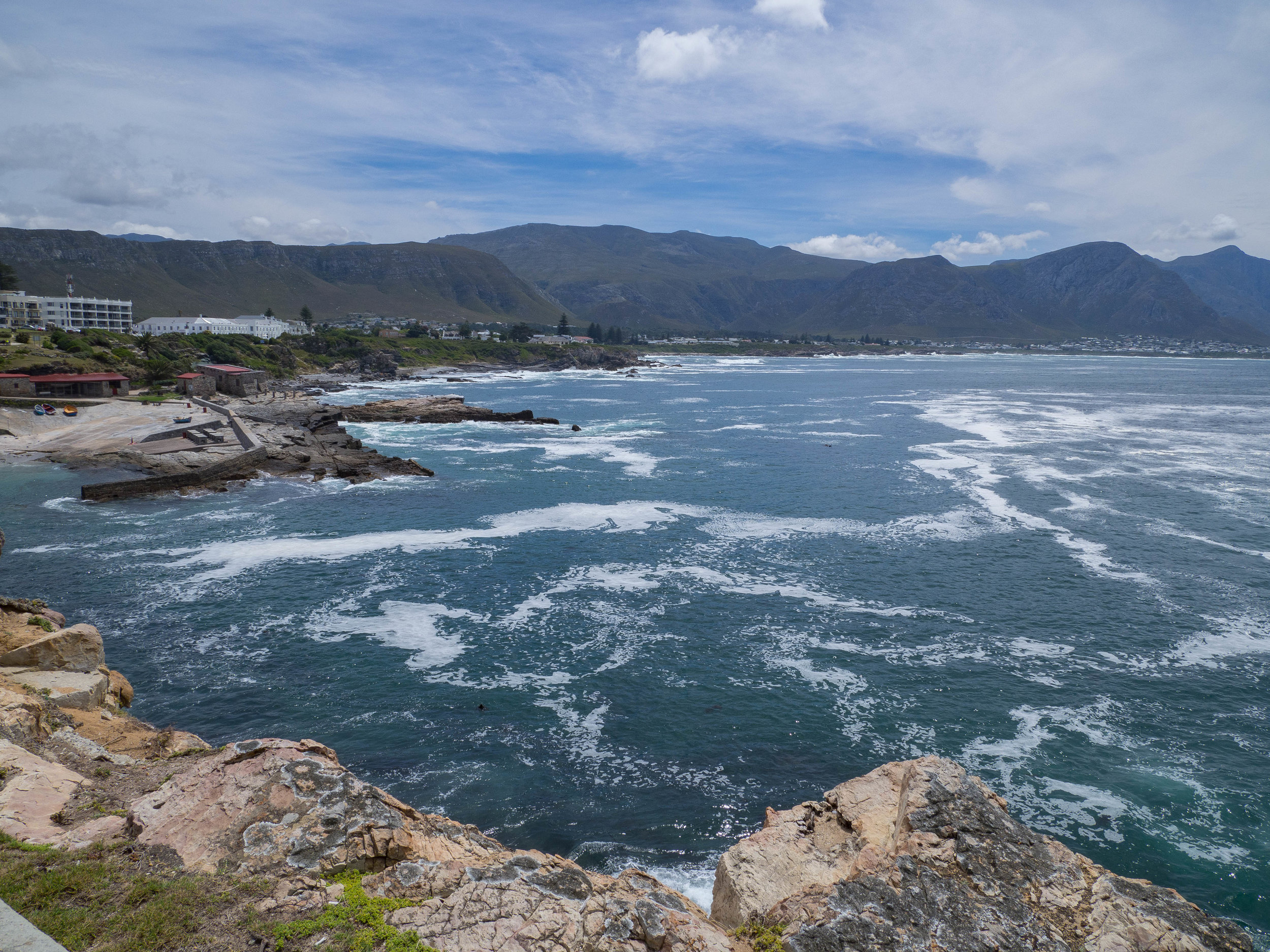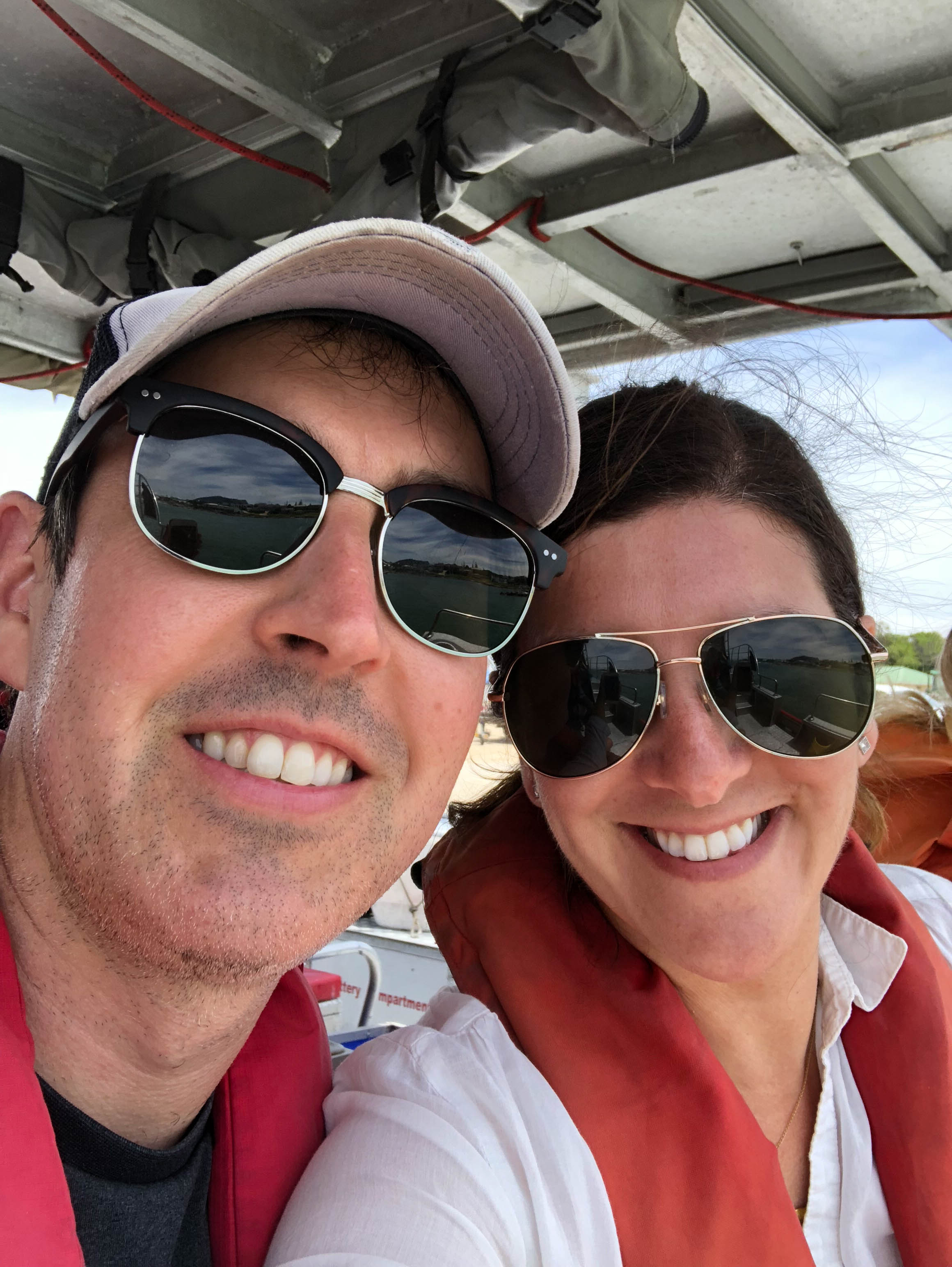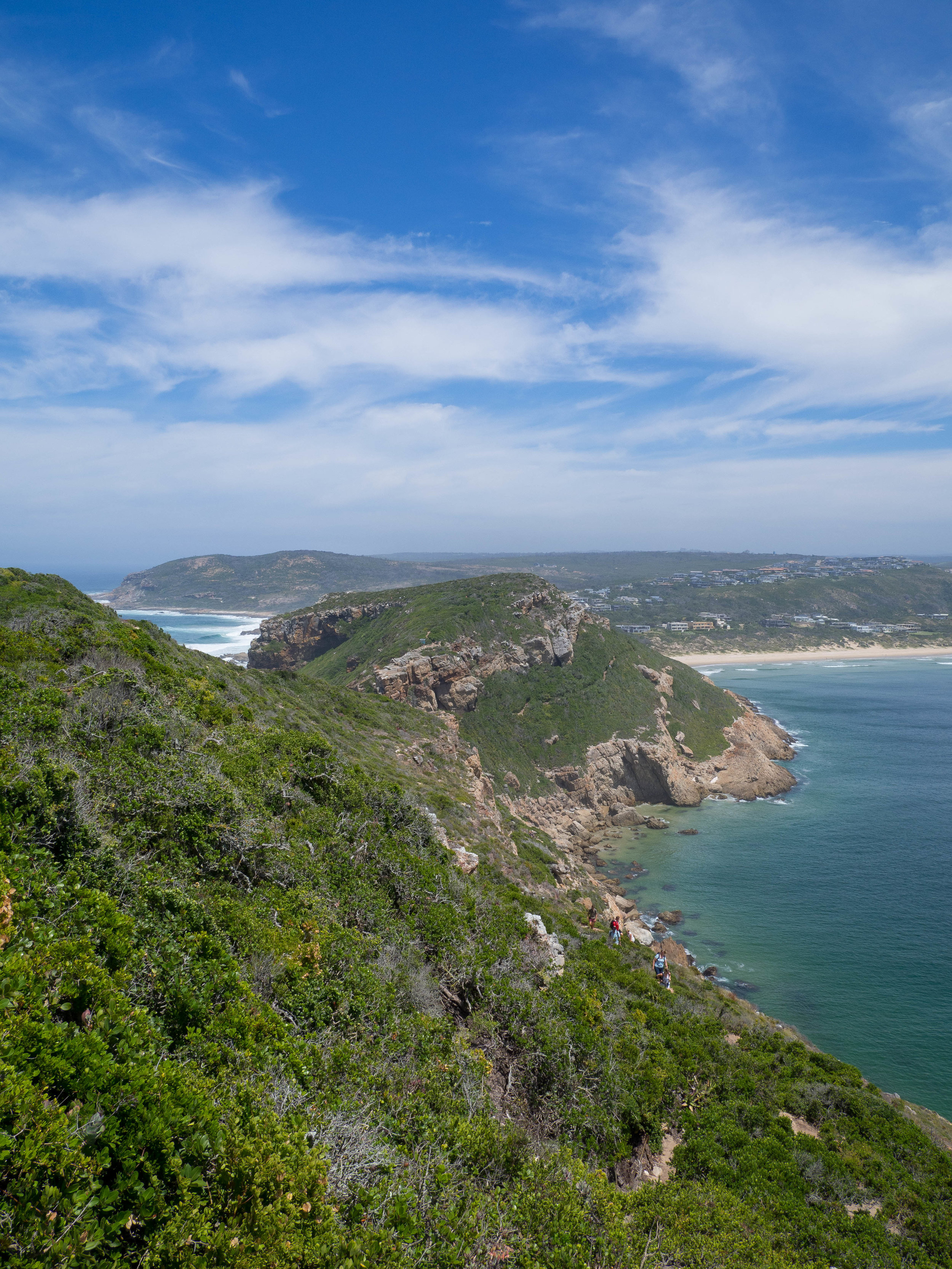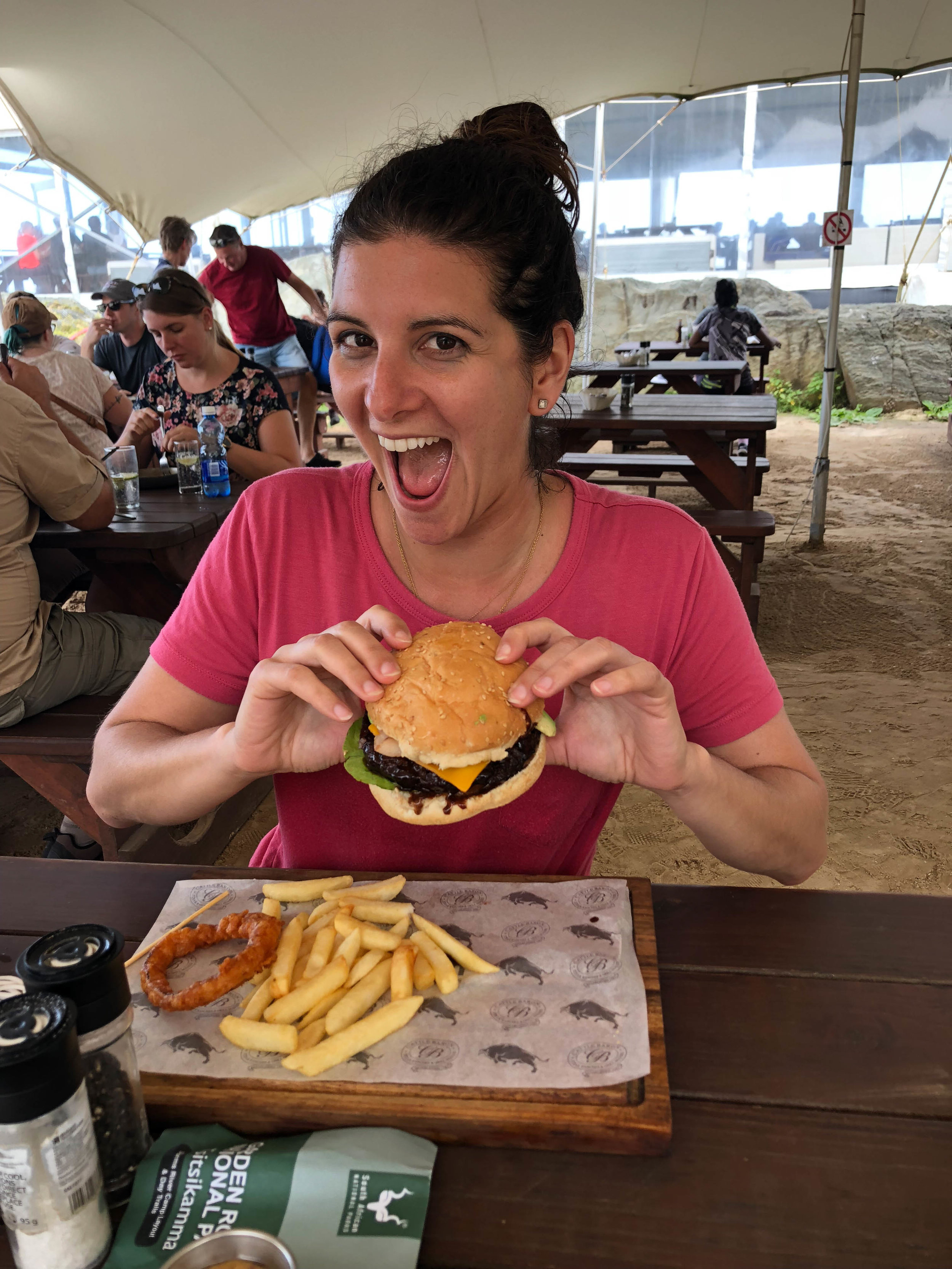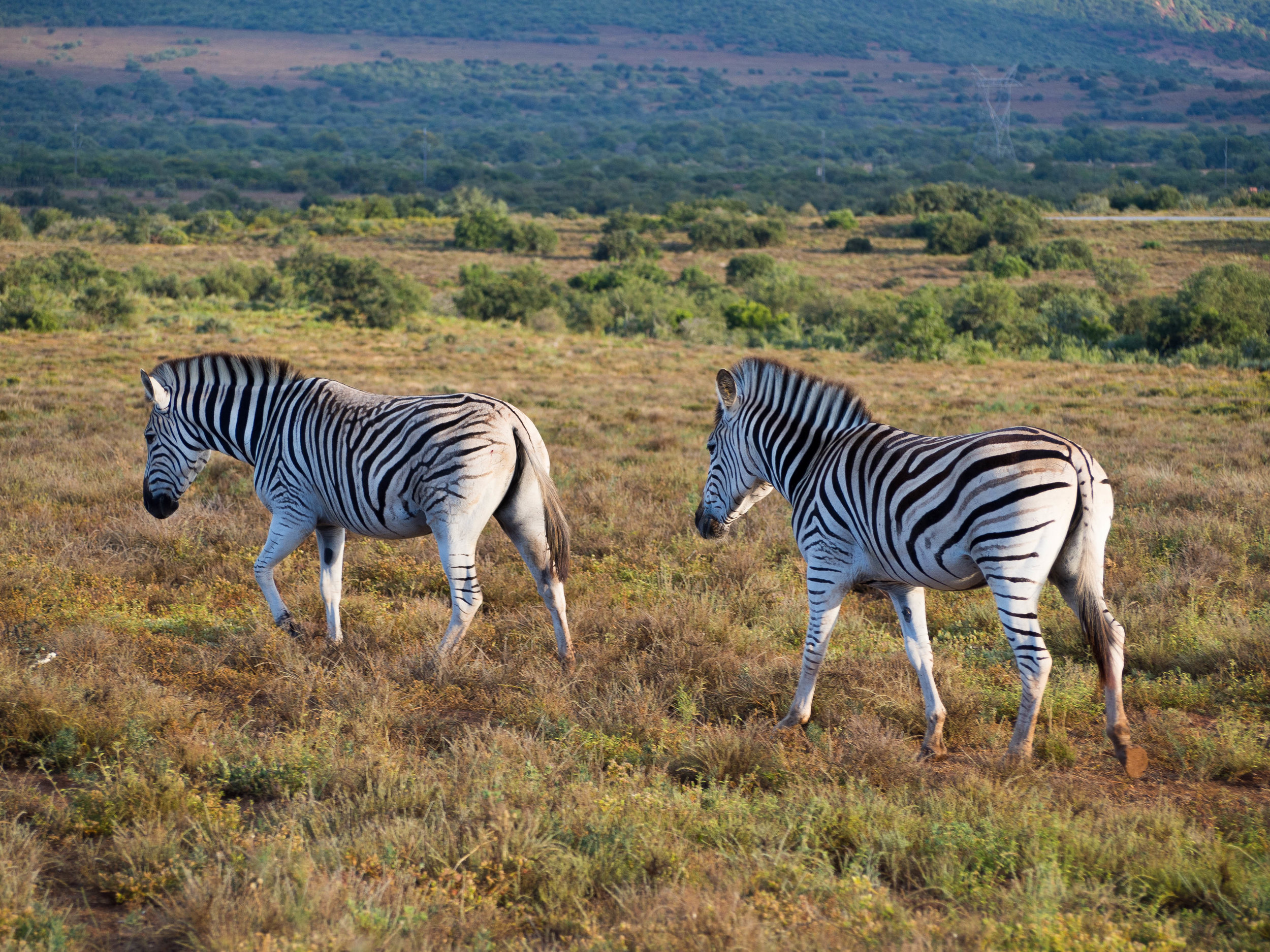South Africa Travel Guide: Garden Route & Johannesburg
Wrapping up my series on our South Africa trip with this final, covering the Garden Route and one day in Johannesburg. The Garden Route is a district along the western coast. We spent three days driving the Garden Route, which I think was a pretty good amount, although I do wish we had scheduled something different to do on our first day, as you’ll learn! Then after spending a night in Addo Elephant Park, we took a flight up to Johannesburg, the largest city in South Africa, to spend one day before flying home. You can also read about our safari in Sabi Sands, and our time in Cape Town for more South Africa travel tips.
Cape Town to Knysna: Shark Diving in Gansbaai
Our first day on the Garden Route was a 5 1/2 hour drive from Cape Town to Knysna, with a brief stop in Hermanus for whale watching from the shore, and a shark diving trip in Gansbaai. We actually did see one whale, although it was a tiny dot in the distance!
Hermanus - there’s a whale somewhere out there!
The shark dive was the only thing we did in South Africa that was a total fail. Scott swears that I talked him into signing up for it, and I swear that he talked me into signing up for it. Since it’s my blog, we’re gonna go with the latter. In his defense, Gansbaai is known for having one of the largest and densest populations of great whites in the world, and that would have been really cool to see. But last year, a few orca’s came through, ate a couple great whites (nature, y’all), and scared them all away. Apparently this happens every so often, and the great whites disappear for a year or so then come back, so if you’re planning on going, you just might want to check to see if they’ve been spotted recently. Unfortunately, all we got to see were little copper sharks, although we did see a ton of them.
The boat ride out was fine, but when we were in the cage, the waves started to pick up. As soon as I got out of the water, a wave of nausea hit me, and I think everyone else on the boat too…I barfed, like, on the boat deck. Thank goodness I hadn’t eaten lunch yet cause it was all rooibos tea. And it would have been much more embarrassing but literally everyone barfed except three people, of course one of which was Scott and his iron stomach.
The only picture I have from our dive. Us pre-barfing. We have no idea what we’re in for.
Although it stunk to lose a day to barfing, Marine Dynamics, the company we booked with was really awesome, and did the best job they could. They were also really focused on sustainability, so despite my not so great experience, if you are interested in shark diving, I would highly recommend booking with them.
The rest of the drive to Knysna was really pretty, through farmlands as far as the eye can see. We stopped in Mossel Bay for dinner at Kaai 4 Braai, which was definitely an eating highlight of the trip. Braai is South African barbecue, usually different cuts of meat and sausage served with roosterkoek, a flatbread grilled over an open flame. It was a super casual spot on the water, with a big fire going where they cooked the food in front of you. My pictures of the food leave a lot to be desired, but it was SOOO good, especially on a super empty stomach after my afternoon of puking 😬
Scott’s mussel pot, which despite looking horrid was really good.
My braii came with chicken, sausage, and lamb chop
Grilling breads over an open flame
We finally arrived in Knysna pretty late at night, where we stayed at this incredible Airbnb, a guest suite with a pool, above a gorgeous home on one of the Knysna heads. Knysna is kind of a resort town in a lagoon where the Knysna river meets the Indian ocean. Most of the town is around the river and on a couple islands in the lagoon. Where we stayed on one of the headlands overlooking the lagoon is a little more secluded, and had the most incredible views.
Garden Route: Robberg Nature Reserve
Our first full day in Knysna we decided to go hiking in Robberg Nature Reserve. But first, an amazing breakfast at East Head Cafe with a waterfront view.
Yummy toast with sauteed veggies, thick cut bacon, and poached egg + a breakfast cocktail because vacation baby
Scott’s savory French toast with pork belly and bacon jam.
Robberg Nature Reserve is a small, rocky peninsula with a hiking trail that leads out the the point. You can go all the way out, which is pretty much an all-day hike, or do what we did and go halfway, where there is a massive climbing-falling sand dune (basically a sand dune high up on a cliff) and a big hill that leads down to the most perfect wide sandy beach. The peninsula has really cool geology, with the east side looking totally different from the west side, despite the fact that it’s so narrow you can literally see to the other side at certain points. The east side is covered in dense green brush and fynbos, a type of plant that exists only in South Africa, and a layer of cemented beach stone is visible the whole way. The other side is dryer and rockier, with these massive, truck-sized burnt orange boulders.
Rising-falling dune, which is super fun to walk through in hiking boots
It’s also great for spotting wildlife. We didn’t see the rare blue duiker, but it’s impossible to miss the very smelly cape seal colony. You can watch them from above on the cliff (just hold your breath), where it’s so cool to see them awkwardly flopping on the rocks, then gracefully gliding through the water.
It’s a strenuous hike, but take as many breaks as you need! Pack plenty of water because it is very hot, and be sure to bring a bathing suit for the beach. I didn’t but still went in with my clothes on because the water was so beautiful!
We were pretty ravenous and thirsty after hiking, so we stopped at Mitchell’s Brewing in Knysna for some beers and bar food. It’s in an industrial area, but it’s right on the lagoon and has a view of Thesen Island. It’s famous for being the OG craft brewery in South Africa.
Peri-Peri chicken livers and mash and calamari
We spent the rest of the afternoon exploring Kynsna, shopping on Thesen Island, then lounging by our pool for sunset, chocolate cake from Ile de Pain, and a glass of South Africa pinotage.
Dinner was probably my favorite casual meal of the trip, seafood at Freshline Fisheries. It’s a BYOB seafood restaurant right on the beach. I ordered a seafood plate that had their Mozambique prawns in peri-peri sauce, which were seriously the most tender prawns I’ve ever had in this incredible, buttery and spicy peri-peri sauce. I also feel like I deserve some props for eating them without getting anything on my white pants.
Garden Route: Tsitsikamma National Park —> Addo Elephant Park:
We packed up and begrudgingly left our perfect little Kynsna Airbnb bright and early to go hiking in Tsitsikamma National Park, home of the Otter Trail, one of the most famous hiking trails in the world. Otter Trail is a 5 day hike, so we went on the shorter, but still incredibly gorgeous waterfall hike that forms the first part of the Otter Trail. The trail leads along the rocky seacoast to a pretty waterfall with a deep pool for swimming.
The hike was REALLY tough - 3/4ths of it was climbing, jumping, and balancing over rock scrambles along the coast. And it was hard to pay attention to where you were stepping because the massive waves slapping against the rocks were so beautiful and distracting! The waterfall swim at the end was well worth it - because we got there early, we had the pool all to ourself before a small crowd (and by crowd I mean like 10 people) showed up as we were leaving.
Swimming in a waterfall!
Waves crashing along the shore
For lunch, we went to Cattle Barron, which is basically a chain that’s in South Africa national parks. For being a chain, the food really isn’t too bad. I’ll say, after doing that rough hike on just a croissant and biltong, the burger, fries and cheap beer I had were pretty much the best I’ve ever had.
After lunch we went on a short hike to the suspension bridges that cross a giant gorge near the entrance. That area of the park is much more crowded, and there’s a lot of other activities you can do there like kayaking, ziplining and a small beach.
From there, we drove out to Addo Elephant Park, a reserve outside Port Elizabeth that’s famous for it’s 600+ elephants, up from an original population of 22. Since we already did the whole luxury safari in Sabi Sands, we decided to stay in a tent. Don’t worry guys, it wasn’t a snoopy tent or anything…but it also wasn’t quite “glamping.” I would highly recommend doing one night in a tent if you can - it’s definitely an experience to hear the wildlife all around you at night. Our tent was right on the edge of the park, overlooking a dried up water hole. We got there late afternoon, around the time the park was closing, so we just cracked open a bottle of wine, enjoyed sunset and elephant spotting from our porch, then had yet another dinner at Cattle Barron.
Elephant watching from our porch
Sunset from our tent
Addo Elephant Park —> Johannesburg
Instead of doing a group safari like we did in Sabi Sands, we drove Addo ourselves. It was pretty easy to do, and easily accessible in a small car. While the animal sightings weren’t as impactful as the closeups you get on a private safari, it was really fun navigating the park and being our own spotters. Turns out we’re pretty good at it , especially Scott “Steve Irwin” Hartley. I swear, that boy would literally spot a kudu that was basically a spot in the distance.
If you do drive it yourself, make sure you keep at least one eye on the road, because the endangered dung beetle is everywhere (it’s massive, so you’ll see them) as are these palm sized slugs. If you stay at the camp, you get to enter early, so it’s really cool to see the park almost by yourself. When other people are around, you can usually spot wildlife by noticing where other people are stopped, but in the morning when it’s quiet, we just drove at a moderate-slow speed while scanning the brush and fields. You’re pretty much guaranteed to see elephants, as well as kudu, zebra, warthogs, buffalo and different antelopes, but we also spotted ostrich, a lion, a jackal, tortoises and a weird looking secretary bird. They give you a little animal spotting “passport” that I’m pretty sure is for kids but we got real competative with that.
Mid-afternoon we headed out of the park to catch a flight from Port Elizabeth to Johannesburg, for our last day of the trip. In Johannesburg, we just stayed near the airport since we were there such a short time, and took Uber everywhere. We arrived around dinnertime and immediately grabbed an Uber to go to Sandton, one of the suburbs of Johannesburg, for dinner at Epicure. It’s a trendy restaurant (seriously, I have never felt so uncool in my life) with a menu that highlights flavors from all over Africa. I feel like in the states there’s not a lot of appreciation for the diversity of African cuisines, even though Southern food is basically West African food. So it was fun to be able to taste around all the different flavors on one menu.
Ivorian-style crab and plantain croquettes with tomato relish
Nigerian-spiced charred octopus
South African-style grilled ostrich with pinotage jus and butternut mash
West African-style goat over plantain mash
Johannesburg
Johannesburg is the largest city in South Africa, and the historical center of the country’s mining industry. You can still see remnants of the mines all over town, intentionally left almost like a scar on the landscape, a reminder of an industry that basically created apartheid. It’s not the prettiest city, but in recent years it’s had a bit of an urban renewal, and there are a bunch of cool neighborhoods and museums to explore.
Since we flew out of Johannesburg at night, we spent our one day exploring a couple museums and one of the artsier neighborhoods in the city. Our first stop was the Apartheid Museum, which was one of the most impactful museums I’ve ever been to. It explains what happened in the history of South Africa that laid the groundwork for apartheid, how apartheid laws came to be (which was terrifyingly similar to a lot of what’s going on in the US today), and how apartheid was finally ended. There was also a fantastic special exhibit on Mandela, that took you through his early life, his entrance to politics, his time as a political prisoner and what he did as president of South Africa. His story was just incredible, and if you’re interested in reading more about him, you can access a lot of the museum plaques on their website.
The entrance to the Apartheid Museum
Pass books at the Apartheid museum
We spent a good 3 hours in the museum, but you could easily spend most of the day there. I wish we had planned our trip so Johannesburg was our first stop, cause I think the museum would have given really helpful context for the rest of our trip.
For lunch, we went to Market on Main, a Sunday market in the Maboneng District, a trendy arts district. There’s a bunch of street vendors selling souvenirs, but the main market is in a old building filled with the most delicious looking food, and artists selling home decor, jewelry, and clothes. For lunch, I got a whole fried fish with jollof rice, cassava leaves and beans, fried plantains and yucca, slaw and a spicy pili-pili sauce. We also did a little shopping, and I picked up the cutest hoop earings with shwe shwe fabric, a traditional South African textile by Ark of O Designs.
After lunch we took a cab to Constitution Hill, a former fort and prison complex where the new Constitutional Court sits. We took a guided tour of the old jail, where both Mandela and Gandhi had been imprisoned at different points in time. The museum tells the history of the complex, as well as how abuses to human rights and apartheid laws were carried out in the jail. It’s all pretty shocking, but impossible not to draw parallels to things that are happening in the present day.
The old jail
Three bowls that were a symbol of apartheid in the jail. One was for white prisoners and held normal food, the next was the coloured bowl and held beans and rice or a stew with rotten fish, and the third was for black prisoners and held a cornmeal or rice porridge.
The tour also takes you to the new Constitutional Court, which was built with a lot of attention to history and symbolism. South Africa has the most progressive constitution in the world, and although many of it’s promises are unfulfilled, the court is definitely aspirational. It’s built right next to the jail as a reminder of the cruelty of the past, and there is a staircase between the jail and the court made with bricks from the jail, a reminder that the future is built on the past.
The front door of the Constitutional Court, engraved with the Bill of Rights
From there, it was time to head back to the to catch our flights home. I wish we had more time to stay, but I think as I’ve mentioned in each of these posts, I WILL BE BACK!
You might also like:

